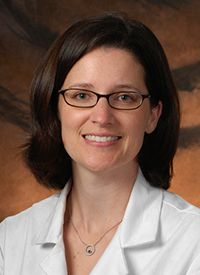Expert Highlights Advances in CAR T-Cell Therapy
Noelle Frey, MD, discusses the FDA approvals of CAR T-cell therapies, as well as the bright future of the treatment.
Noelle Frey, MD

Noelle Frey, MD
As tisagenlecleucel (Kymriah) makes its way through the hematologic landscape and the October 2017 FDA approval of axicabtagene ciloleucel (axi-cel; Yescarta) brings hope to larger populations with patients with diffuse large B-cell lymphoma (DLBCL), the chimeric antigen receptor (CAR) T-cell therapy arena continues its meteoric rise.
Most recently, the FDA lifted clinical holds placed on 2 phase I trials investigating a gene-edited allogeneic CAR T-cell therapy known as UCART123. The investigational drug targets CD123, as a treatment for blastic plasmacytoid dendritic cell neoplasm and acute myeloid leukemia. UCART123 was designated an investigational new drug by the FDA in February 2017, making it the first allogenic gene-edited CAR T-cell agent approved for clinical trial.
These regulatory advances have excited oncologists, but CAR T-cell products are associated with concerning toxicities, which is something that Noelle Frey, MD, says must be taken under consideration.
OncLive: Can you provide an overview of your lecture on CAR T-cell therapy?
Can you expand on the CAR T-cell therapies that are now available?
In an interview during the 2017 OncLive® State of the Science SummitTM on Hematologic Malignancies, Frey, assistant professor of medicine at the Perelman School of Medicine at the University of Pennsylvania, discussed the FDA approvals of CAR T-cell therapies, as well as the bright future of the treatment.Frey: I spoke about CAR T-cell therapy and how that is helpful for patients who have certain malignancies, such as acute lymphoblastic leukemia (ALL) and non-Hodgkin lymphomas. I have to say, it is an exciting time to be giving this talk because…there are now 2 FDA-approved CAR T-cell therapies that will be very helpful for our patients going forward.The first therapy, tisagenlecleucel, was approved in August 2017, and this is a CAR T-cell product directed to CD19 that is FDA approved for pediatric and young adult patients up to the age of 25. It was approved in the setting of a large multicenter, multinational study that showed a significant benefit for this patient population with relapsed and refractory disease, who otherwise have very limited treatment options.
Axicabtagene ciloleucel is approved for a different population of patients; it is for adults who have relapsed or refractory DLBCL. That includes patients with refractory primary mediastinal large cell lymphoma, as well as patients who have transformed follicular lymphoma.
What are the remaining safety questions with CAR T-cell therapy?
This has been such an exciting year for this therapy. What do you believe is next?
It is a sign of the tremendous advances that have happened in this field of cellular immunotherapy and I am hopeful there will be even more to come as we move forward.The nature of this therapy correlates with unique treatment-related toxicities. Compared with a couple of years ago, we are a lot better at identifying those toxicities and managing them. However, going forward in the field, that should be a key focus for future research—to better understand these toxicities so that we can make this therapy safer and therefore apply it to even more patients.I am most looking forward to hearing how these patients do in the long run. These are patients who receive CART19-based therapy across many different programs.
The other thing that is very exciting is exploring new targets for CAR T-cell therapy. An example of that would be the target CD22 in ALL. Many early investigations are also underway to see if we can expand this type of therapy to other malignancies, including solid tumors.
What advice can you provide to community oncologists who might have patients who would benefit from CAR T-cell therapy?
There is a growing knowledge base using CAR T cells targeted to BCMA in multiple myeloma. [With CD22-targeted CAR T-cell therapy] for ALL, that perhaps could be used in other B-cell malignancies, as well. The initial target for CAR T-cell therapy of CD19 is truly an ideal tumor target. Its [effect] is very limited to healthy B cells and malignant B cells, so we can expect very little off-tumor/on-target toxicity. That is one of the challenges in identifying future targets for CAR T-cell therapy—considering the potential side effects based on the target. At this point in time—and this may change as we go forward in the field—the treatment is probably safest to administer at a specialty center. [It would be safe at] a center that might have experience in treating patients with leukemia, or putting patients through a stem cell transplant, as well as centers that have gained experience using cellular therapies, as well. Hopefully, that will change as we go forward so that patients can get treated closer to home.
One of my goals is to spread the understanding that these therapies are very helpful for certain groups of patients—for the community oncologist to start thinking about these therapies for their patients. The other thing I really do want to communicate is the potential treatment-related toxicities because they are significant. Therefore, when that community oncologist starts to have a conversation with their patient, they will be well informed not only about the benefits, but also about the potential side effects.



